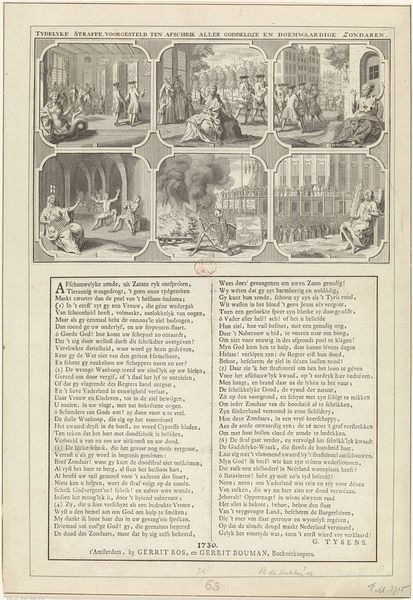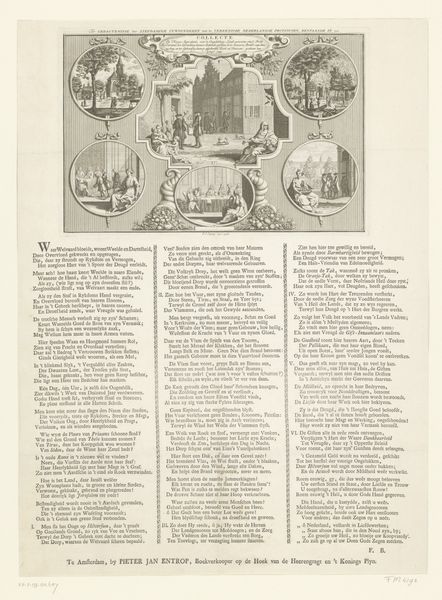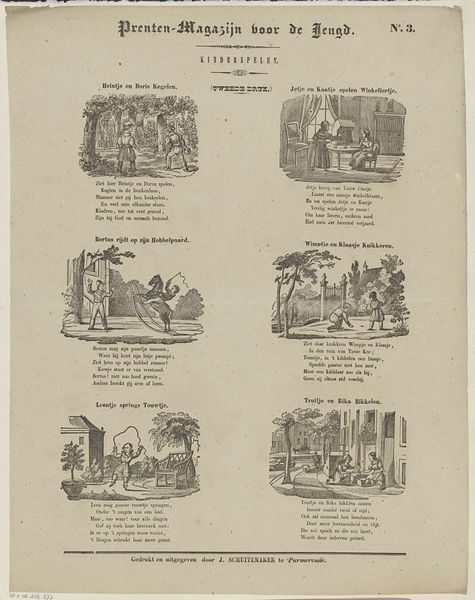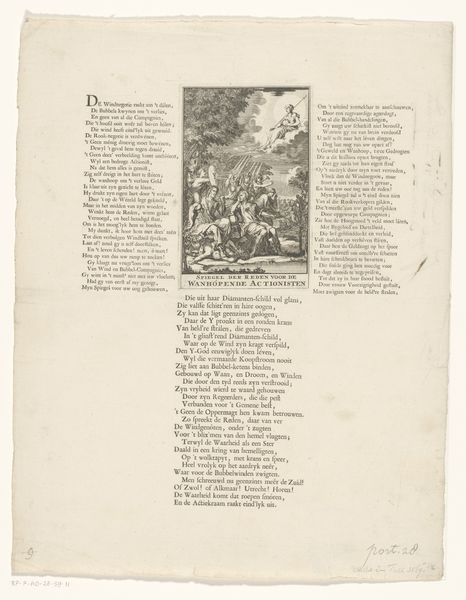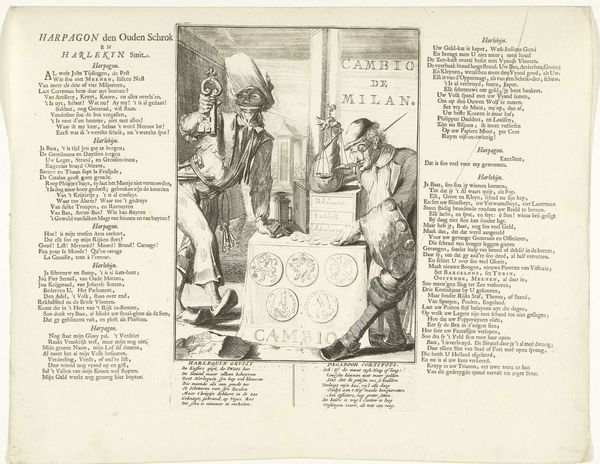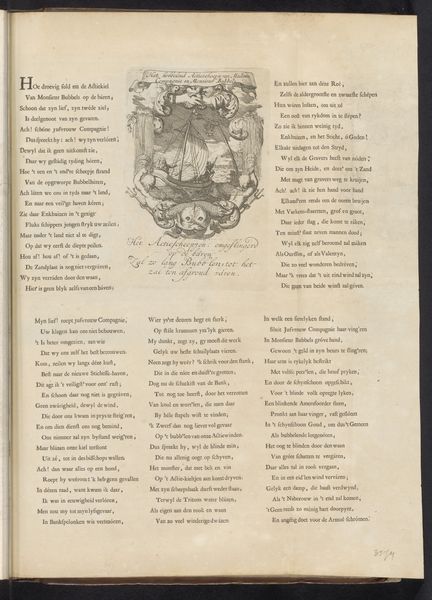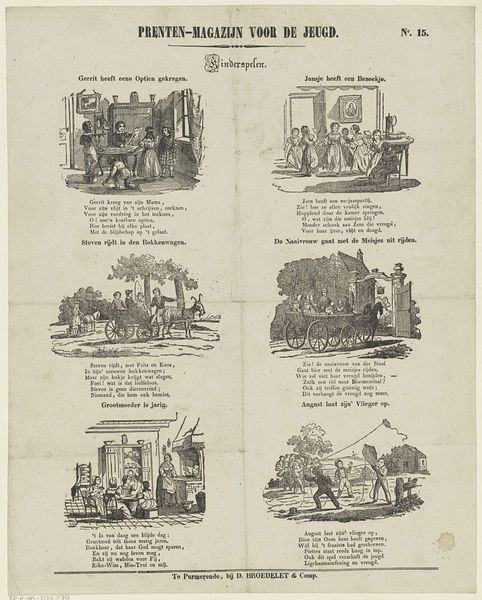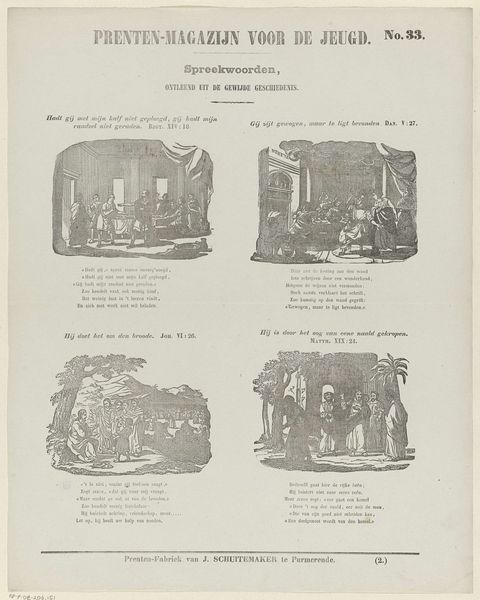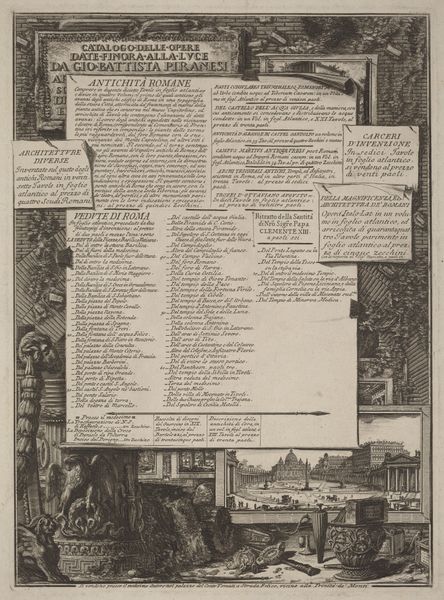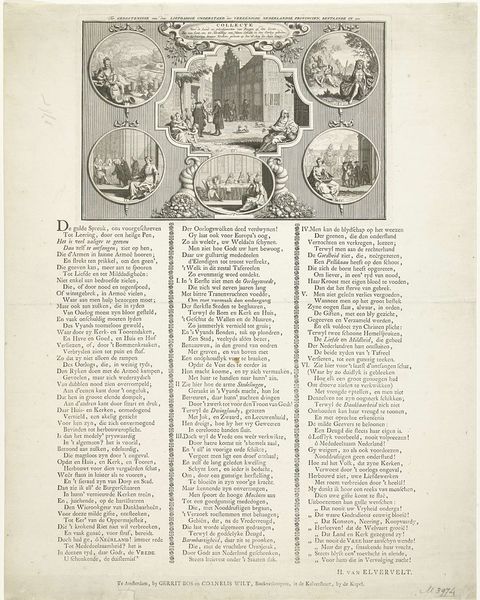
graphic-art, print, engraving
#
graphic-art
#
narrative-art
# print
#
old engraving style
#
history-painting
#
academic-art
#
engraving
Dimensions: height 488 mm, width 375 mm
Copyright: Rijks Museum: Open Domain
Editor: Here we have an engraving from 1730, titled "Persecution and punishment of homosexuals in 1730". It's quite striking; the composition with the different vignettes creates a strong narrative feel. I'm particularly interested in understanding what this print says about the social attitudes of the time. What's your perspective on this work? Curator: Given its visual language and date, it reveals a great deal about the social and political anxieties surrounding morality and deviance in 18th-century Netherlands. It’s fascinating how the print uses public imagery to enforce societal norms, portraying a clear message about the consequences of homosexuality, what was regarded as the ‘crime against nature’. Editor: So, it’s meant to be a cautionary tale? Are the individual scenes depictions of real events, or are they symbolic representations of the ‘sins’ and punishments? Curator: Probably more the latter. Engravings like these weren't always literal reports. Consider how the engraver visually frames and dramatizes these supposed ‘crimes,’ shaping public perception. Note how the figures in the foreground face outward, directly implicating the viewer and demanding their complicity in the spectacle of judgement and public execution. These events often had explicit state involvement for public awareness. How does this overt political and moral messaging resonate with you? Editor: It makes me wonder about the power structures at play. Who commissioned this print, and what was their agenda? It feels very propagandistic, shaping public opinion through fear and moral condemnation. Curator: Precisely. It served as a tool for solidifying the authority of the ruling classes and religious institutions, dictating what behaviors were deemed acceptable. Think about the ripple effects – how these images impacted the lives of individuals targeted by these laws and moral judgments. Editor: I see. So much more than just a historical record; it's a powerful tool of social control. I will consider those affected people next time. Curator: Exactly! It really underlines the importance of examining the history of images like this – what stories they tell and, crucially, whose voices they silence.
Comments
No comments
Be the first to comment and join the conversation on the ultimate creative platform.
